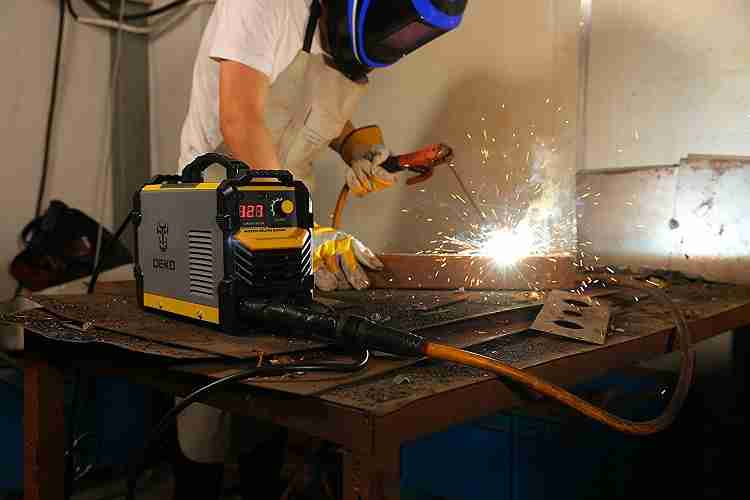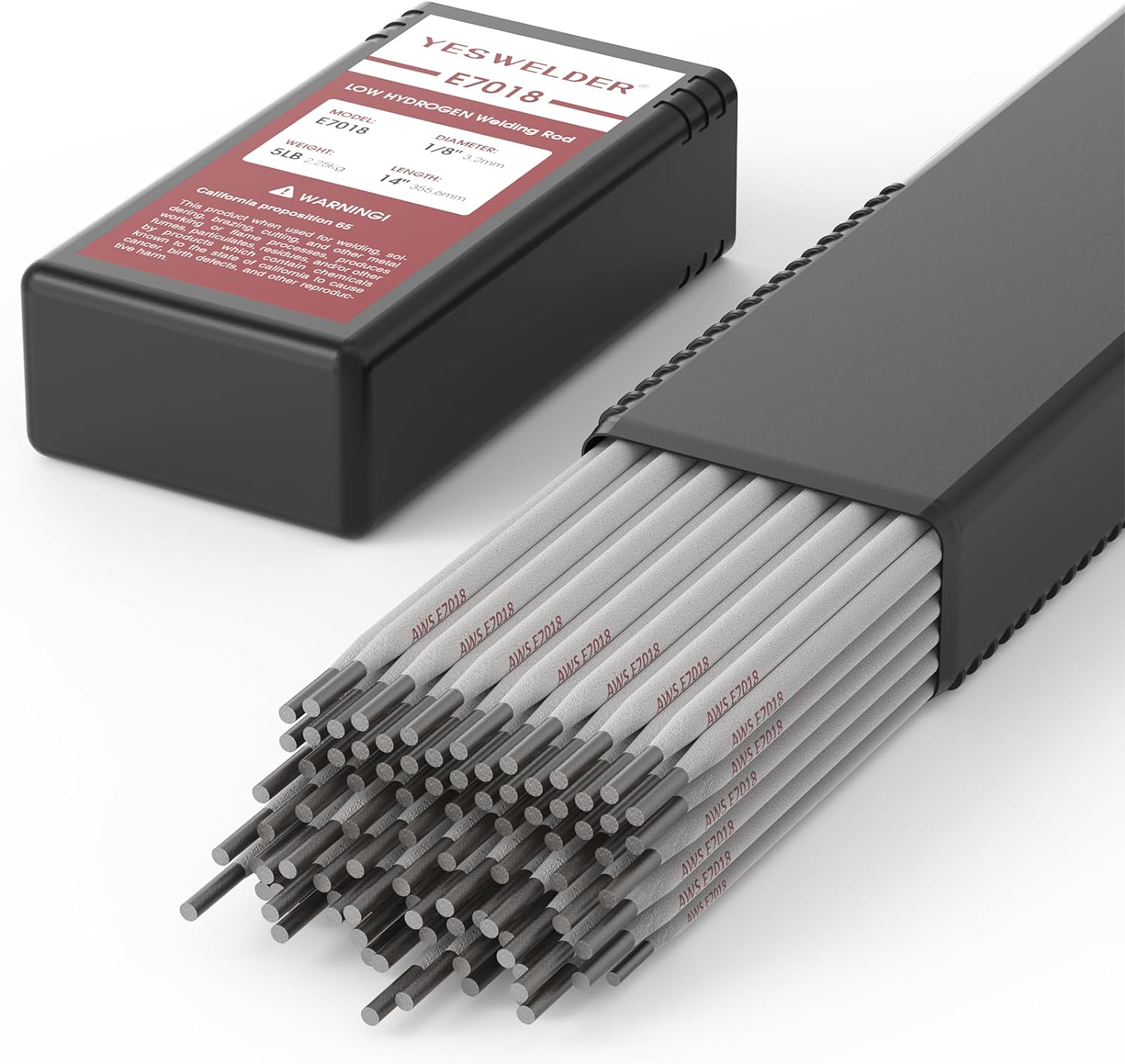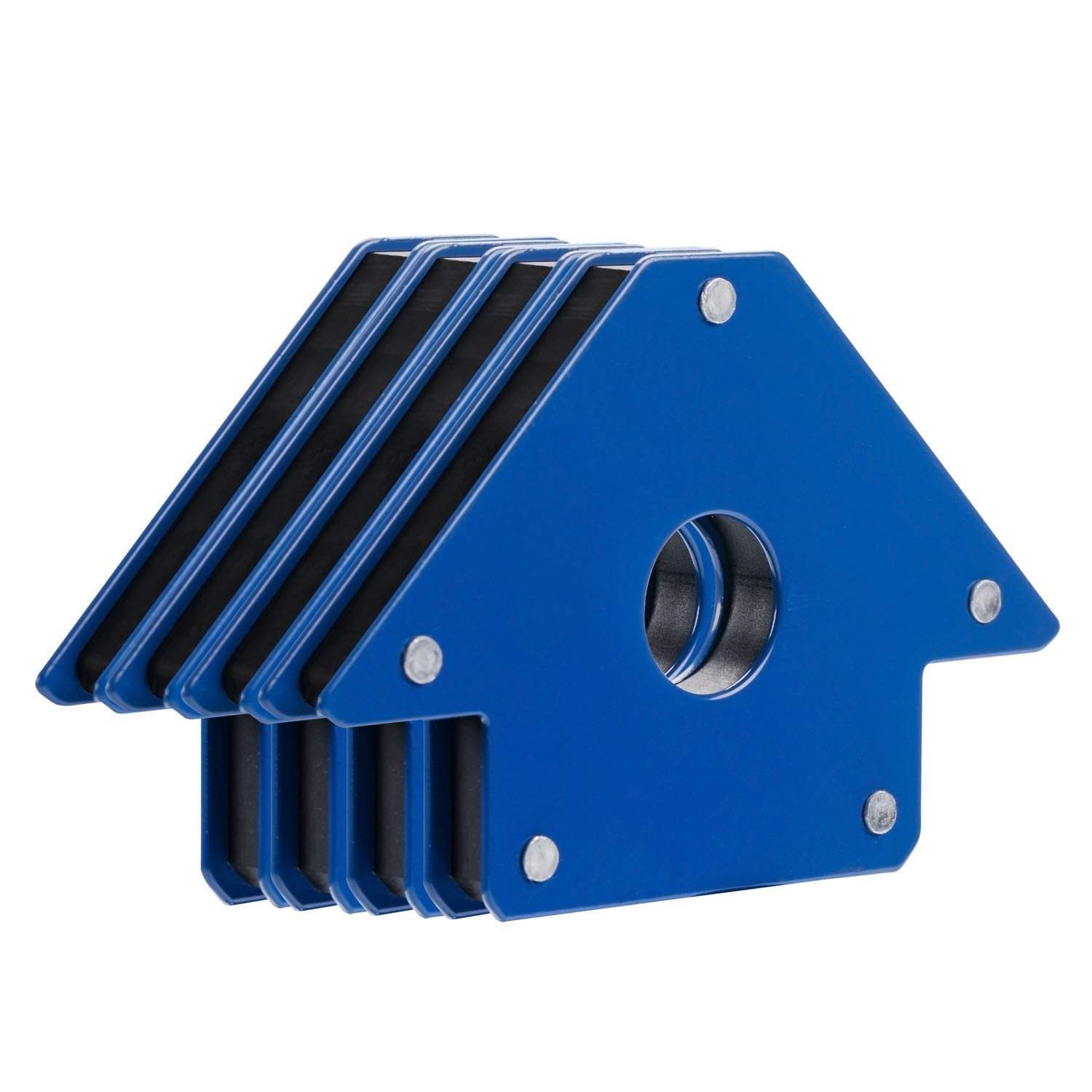Welders, have you ever wondered how to keep your welding electrodes in tip-top shape? We all know that moisture can be the enemy when it comes to welding electrodes. It can lead to defects, poor weld quality, and costly rework. But fear not, because in this article, we will reveal some practical tips on how to store your welding electrodes to prevent moisture absorption. So, if you’re ready to ensure optimal performance and extend the shelf life of your electrodes, keep reading!
Understanding the Importance of Proper Storage for Welding Electrodes
Introduction to welding electrodes
Welding electrodes are an essential component in the welding process. They are responsible for conducting the electric current required to create an arc and melt the metals being joined. Welding electrodes come in various types, each with its own unique properties and requirements. It is crucial to understand the importance of properly storing welding electrodes to maintain their quality and ensure optimal weld performance.
Importance of preserving the quality of welding electrodes
Proper storage of welding electrodes is vital to preserve their quality and performance. Moisture absorption is a common issue that can significantly impact the effectiveness of welding electrodes. When exposed to moisture, electrodes can become damp, resulting in a host of problems such as reduced weld quality, increased porosity, and decreased mechanical properties of the weld. To avoid these issues, it is crucial to implement effective storage practices to prevent moisture absorption.
Impact of moisture absorption on welding electrodes
Moisture absorption can have a detrimental effect on the performance and quality of welding electrodes. When exposed to moisture, electrodes can experience a phenomenon called “porosity.” Porosity refers to the presence of small voids or gas pockets within the weld. These voids weaken the weld’s integrity and may lead to weld failures. Additionally, moisture absorption can cause hydrogen embrittlement, reducing the mechanical properties of the weld. Therefore, understanding and mitigating the impact of moisture absorption is essential for achieving high-quality, reliable welds.
Choosing the Right Storage Environment
Temperature control
Proper temperature control is crucial to preserving the quality of welding electrodes. Ideally, electrodes should be stored in a cool and dry environment. Exposure to high temperatures can lead to electrode degradation, while extremely low temperatures can cause brittleness. Maintaining a temperature range of 50°F to 120°F (10°C to 49°C) is recommended for most types of welding electrodes. It is essential to store electrodes away from direct heat sources, such as radiators or hot pipes, to ensure their longevity.
Humidity control
Controlling humidity levels is another critical aspect of proper electrode storage. Excessive moisture in the air can be absorbed by electrodes, leading to moisture-related problems during welding. To maintain optimal humidity levels, the storage area should have a relative humidity of around 50%. Using a dehumidifier or air conditioner can help regulate humidity levels. Regularly monitoring and adjusting humidity levels in the storage area is crucial to prevent moisture absorption.
Avoiding exposure to direct sunlight
Exposing welding electrodes to direct sunlight can cause them to heat up, leading to moisture condensation and potential damage. Sunlight can also degrade the electrode coating, rendering it less effective during welding. To prevent these issues, it is important to store electrodes in a cool, shaded area, away from direct sunlight. Choosing a storage location that offers protection from sunlight and UV radiation will help maintain the quality and performance of welding electrodes.
Storage Containers and Packaging
Moisture-resistant packaging materials
To prevent moisture absorption, it is essential to use moisture-resistant packaging materials for welding electrodes. Moisture-resistant plastic bags or containers with seals can provide an effective barrier against moisture. The packaging materials should be durable and resistant to tears or punctures. Using high-quality packaging materials ensures that the electrodes remain protected from external moisture throughout their storage period.
Sealing methods to prevent moisture entry
Proper sealing techniques are crucial to preventing moisture entry into the packaging. Depending on the packaging materials used, various sealing methods can be employed. Heat-sealing is a common method where the open end of the packaging material is sealed using heat. Alternatively, ziplock-style bags with reliable seals can be used for easier access and resealing. Ensuring a tight and secure seal is essential to maintain the integrity of the packaging and prevent moisture ingress.
Labeling and identification
Proper labeling and identification of welding electrodes are essential for effective storage and inventory management. Each package should be clearly labeled with the electrode type, size, and other relevant information. This allows welding personnel to easily identify the electrodes they need for a specific weld job and ensures that the electrodes are stored and used in the correct order. Implementing a labeling system helps maintain organization and prevents confusion or mix-ups during storage.
Handling and Preparation before Storage
Inspecting welding electrodes for damage
Before storing welding electrodes, it is important to conduct a thorough inspection to check for any signs of damage. Damaged electrodes should not be stored or used, as they can lead to weld defects or failures. Inspect the electrodes for any visible cracks, chipping, or signs of contamination. Additionally, check the packaging materials for tears or punctures that could compromise the seal. Discard any electrodes or packaging materials that show signs of damage.
Cleaning and drying prior to storage
Cleaning and drying the welding electrodes before storage is an important step to remove any contaminants or moisture that may be present. Use a clean, dry cloth or brush to remove any dirt, dust, or debris from the electrodes. If the electrodes appear to be contaminated with oil or other substances, use an appropriate cleaning solvent to remove the contaminants. After cleaning, ensure that the electrodes are completely dry before storing them to prevent moisture absorption.
Proper electrode handling techniques
Proper handling techniques are essential to avoid damage to the electrodes and maintain their quality. When handling electrodes, always use clean, dry gloves to prevent contamination from oils or moisture on the hands. Avoid dropping or roughly handling the electrodes, as this can cause damage or chipping. It is also important to handle the electrodes by their packaging or non-coated ends to prevent contamination of the electrode coating. Implementing proper handling techniques ensures that the electrodes are in optimal condition for storage and future use.
Recommended Storage Techniques
Using airtight containers
Storing welding electrodes in airtight containers provides an additional layer of protection against moisture absorption. Airtight containers can be plastic or metal and should have a reliable seal to prevent moisture from entering. Before placing the electrodes in the container, ensure that they are clean and dry. Label the container with the electrode type and other relevant information for easy identification. Storing electrodes in airtight containers eliminates the risk of moisture damage and extends their shelf life.
Vacuum sealing electrodes
Vacuum sealing is another effective method to prevent moisture absorption in welding electrodes. This technique involves removing air from the packaging material and sealing it, creating a vacuum-sealed environment. Vacuum sealers are readily available and can be used to package individual electrodes or batches of electrodes. Remember to label the vacuum-sealed packages before storing them to maintain proper inventory management. Vacuum sealing offers an excellent solution to protect electrodes from moisture and ensure their long-term quality.
Using desiccants to absorb moisture
Desiccants are moisture-absorbing agents that can be used to further protect welding electrodes during storage. Desiccant packets or bags can be placed inside the packaging or container with the electrodes to absorb any residual moisture. Silica gel is a commonly used desiccant that can effectively reduce humidity levels. However, it is important to regularly check and replace the desiccants as they become saturated. Using desiccants alongside proper packaging and storage techniques adds an extra layer of protection against moisture absorption.
Storage in low humidity environments
Storing welding electrodes in low humidity environments can significantly reduce the risk of moisture absorption. If possible, dedicate a room or area specifically for electrode storage and control the humidity levels within that space. Using dehumidifiers or air conditioning units can help maintain optimal humidity levels. Regularly monitor the humidity levels in the storage area and make adjustments as necessary. Storing electrodes in a low humidity environment minimizes the chances of moisture-related problems and ensures the longevity of the electrodes.
Special Considerations for Different Electrode Types
Storage requirements for low hydrogen electrodes
Low hydrogen electrodes are particularly vulnerable to moisture absorption. These electrodes have a moisture-sensitive coating that can easily absorb moisture from the environment. To prevent moisture-related issues, it is crucial to store low hydrogen electrodes in a dedicated, temperature-controlled storage area. The relative humidity in the storage area should be maintained at a maximum of 50%. Additionally, strict adherence to proper packaging, sealing, and handling techniques is essential. By following these guidelines, the quality and performance of low hydrogen electrodes can be preserved.
Storage recommendations for cellulose-based electrodes
Cellulose-based electrodes also require specific storage considerations due to their sensitivity to moisture. These electrodes have a moisture-attracting coating that is susceptible to absorption. To prevent moisture-related problems, cellulose-based electrodes should be stored in airtight containers or vacuum-sealed packages. Using desiccants inside the packaging can also help absorb any residual moisture. It is important to store cellulose-based electrodes in a low humidity environment, similar to low hydrogen electrodes, to prevent moisture absorption and maintain their integrity.
Preventing moisture absorption in stainless steel electrodes
Stainless steel electrodes are prone to moisture absorption, which can lead to problems like porosity and hydrogen embrittlement. To prevent moisture absorption, stainless steel electrodes should be stored in a dry, low humidity environment. Optimal humidity levels should be maintained at or below 50%. Choosing moisture-resistant packaging materials and employing proper sealing techniques are also essential. By taking these precautions, moisture-related issues can be minimized, and the quality of stainless steel electrodes can be preserved.
Regular Inspections and Maintenance
Monitoring humidity levels within storage area
Regularly monitoring the humidity levels within the storage area is crucial to ensure the effectiveness of the storage practices. Use a reliable hygrometer to measure the relative humidity, and keep a record of the readings. If the humidity levels exceed the recommended range, take immediate action to adjust the humidity using dehumidifiers or air conditioning units. Regular monitoring allows for timely adjustments and helps prevent moisture-related issues.
Checking for signs of moisture damage
Periodically inspect welding electrodes for any signs of moisture damage. Examine the packaging for tears, punctures, or any other indications of moisture ingress. If any electrodes show signs of moisture damage, discard them and replace them with fresh electrodes. Regular inspections ensure that any electrodes exposed to moisture are promptly identified and removed from storage to prevent any adverse effects during welding.
Repackaging and replacing damaged electrodes
If welding electrodes are discovered to be damaged or compromised during inspections, they should be immediately repackaged or replaced. Damaged electrodes can negatively impact weld quality and lead to weld defects. Ensure that damaged electrodes are properly disposed of and replaced with new ones. It is important to maintain a well-stocked inventory of welding electrodes to ensure there are no delays in replacing damaged electrodes.
Proper Handling and Use of Welding Electrodes
Removing electrodes from storage
When removing welding electrodes from storage, it is crucial to handle them with care and avoid any rough handling. Remove the electrodes from their packaging or containers gently to prevent damage. Inspect each electrode before use to ensure they are in optimal condition and free from any visible defects or moisture. Proper handling during the removal process helps maintain the quality of the electrodes and reduces the risk of moisture absorption.
Acclimatizing electrodes to working conditions
Before using welding electrodes, it is essential to allow them to acclimate to the working conditions. This means bringing the electrodes to the temperature and humidity levels of the welding environment. Acclimatizing the electrodes helps prevent moisture condensation on the surface, which can impact weld quality. Allow the electrodes to adjust to the ambient conditions for at least one hour before using them to ensure optimal performance.
Implementing proper electrode storage rotation
Implementing a proper electrode storage rotation system is crucial to ensure that older electrodes are used before newer ones. This helps prevent electrodes from remaining in storage for extended periods, risking moisture absorption and degradation. Organize the storage area in a way that allows easy access to the oldest electrodes. By using the “first in, first out” (FIFO) method, welding personnel can ensure that electrodes are used in the order they were received, preventing waste and maintaining the quality of the electrodes.
Training and Education for Welding Personnel
Awareness of proper storage practices
Providing training and education to welding personnel is essential to create awareness of the importance of proper storage practices for welding electrodes. Ensure that all personnel involved in the welding process understand the potential consequences of moisture absorption and improper storage. Educate them on the specific requirements for different electrode types and the impact of moisture on weld quality. By fostering a culture of awareness and accountability, personnel will be more likely to adhere to proper storage practices.
Knowledge of electrode-specific requirements
Different types of welding electrodes have specific storage requirements that need to be followed diligently. Conduct training sessions to educate welding personnel on the unique properties and storage recommendations for each type of electrode. This knowledge will enable personnel to handle, store, and use electrodes correctly, ensuring optimal performance and weld quality. Understanding electrode-specific requirements is vital for maintaining the integrity and longevity of welding electrodes.
Understanding the impact of moisture on weld quality
It is crucial for welding personnel to understand the direct impact of moisture on weld quality. Educate them on the potential problems that can arise from using moisture-damaged electrodes, such as porosity, reduced mechanical properties, and weld failure. Providing examples and case studies can help illustrate the importance of proper storage practices and the detrimental effects of moisture on weld quality. By comprehending the significance of moisture prevention, welding personnel will prioritize proper storage techniques and take necessary precautions to ensure high-quality welds.
Conclusion
Summary of key points
Proper storage of welding electrodes is of utmost importance to maintain their quality and prevent moisture absorption. Moisture can adversely affect weld quality, resulting in defects and reduced mechanical properties. By implementing the right storage techniques, such as maintaining temperature and humidity control, using moisture-resistant packaging, and proper handling methods, the impact of moisture absorption can be minimized.
The choice of storage containers, such as airtight containers or vacuum-sealed packages, along with the use of desiccants, can further prevent moisture ingress. Different electrode types require specific storage considerations, such as low humidity environments for low hydrogen and cellulose-based electrodes. Regular inspections and maintenance, along with proper handling and storage rotation, are essential to ensure the integrity of welding electrodes.
The significance of moisture prevention for welding electrodes
Moisture prevention is essential to preserve the quality and performance of welding electrodes. Moisture absorption can lead to porosity, reduced mechanical properties, and weld failures. By following proper storage practices, educating welding personnel, and understanding electrode-specific requirements, the impact of moisture can be mitigated. Prioritizing moisture prevention ensures high-quality welds, enhances welder safety, and maximizes the lifespan of welding electrodes.



































